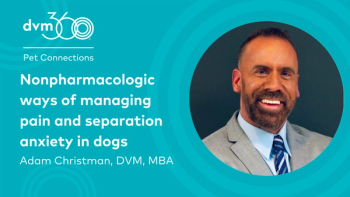
Opening a practice today requires vigilance
To invest our hard-earned dollars, many of us purchase securities in the stock market. It is purely legalized gambling. We are betting that, at some future date, we can sell that stock for a profit.
To invest our hard-earned dollars, many of us purchase securities in the stock market. It is purely legalized gambling. We are betting that, at some future date, we can sell that stock for a profit.
To open a new veterinary practice is a huge investment, but no less a gamble. A potential practice owner needs to consider so many factors in making his or her decision because, some decades later, that practice also needs to be sold for a profit.
The problem today is that too many — perhaps 40 percent — of existing practices may not be marketable, closing their doors and leaving the owner with the value of the real estate alone to supplement retirement savings.
A profitable practice today means that, after paying all expenses, including the owner at a fair salary befitting an associate with the same production, the practice itself shows a bottom-line profit of 10 percent.
In the semi-better good old days of the 1950s and 1960s, a veterinarian could open almost anywhere and not have the problems seen today. There were just so many more pets than veterinarians that success was much, much easier to attain.
In the 1970s, the biggest problem for clients was getting in line, often for hours, to get five gallons of gasoline that had to be conserved by using the closest veterinarian, regardless of skills or exam-room manner.
Yet, in those ancient days, it was not unusual to see 45 percent to 55 percent of revenues fall to the bottom line. Today, 35 percent is more the norm.
Today the population has doubled, but the number of veterinarians seems to have quintupled. That ratio hurts. Even worse, urbanization is decreasing the number of pets per capita.
The number of graduates electing large-animal medicine shrinks every year so that the number in small-animal medicine gets proportionately higher.
Further, if your heart dictates going home to your birth state to practice, demographic shifts may skew your opportunities drastically.
America's population is shifting to the south and west, but numbers often are tricky. States like Delaware Utah, Nevada and Arizona show high growth because the population had been so low that three recreational vehicles full of people can impact the numbers.
For 200 years, everything in this country's infrastructure was based on the certainty of growth. Today, certainty has dissolved in most states that harbor a veterinary college.
Today's new hospitals need to meet the following five criteria to succeed:
- 1,200 to 1,400 active clients per veterinarian with 1.6 pets each
- 30 new clients every month
- 5,000 transactions per veterinarian per year
- $500,000 in professional revenue, not including diets, boarding or grooming
- An average doctor/client transaction of $150. It should translate to an average hospital transaction of at least $105, including over-the-counter business.
To meet these criteria, one needs to find a location where the demographics show above the 80th percentile in five areas.
- Population density. You need 5,000 households per veterinarian to be fairly certain of 1,400 pet-owning, veterinarian-using clients.
- Population growth. I like the scenery in North Dakota, Michigan and other northern states, but too many hospitals there and in most northern states are seeing their net revenues erode as people just pick up and leave. Look five years out to 2012 before you make a major commitment in real estate and a professional future.
- Total consumer spending. You need to have a population with an average family income of no less than $50,000. Less than that means that all those quality medical services we have honed are probably just not going to be used.
- Discretionary income. Again, you can determine whether your selected site is in the 80th percentile for the ability to have enough left over after housing and food to afford veterinary care. We don't want tons of ultrasound and digital radiographic equipment oxidizing into obsolescence because clients can't afford these valuable services.
- A history of spending on pets. The figures are available from demographics companies or your local management consultant. Again, you are looking for the 80th percentile.
- Location, location, location. You don't want to be on top of too many existing competing hospitals.
What about the existing hospitals where the number of client transactions is slipping by 5 percent to 15 percent a year. How long can they hold on? They could and should merge and cut overhead to make ends meet. Many are, but competing for so many years does not bode well for cooperation in the interest of survival.
Some may just relocate, but the question for them is where. Now they become subject to the same considerations listed previously for new practices. It certainly is not easy, and today's banks, hurt by sub-prime housing lending, are increasingly more reticent to lend for new practices without a business plan showing evidence of research into all of the areas outlined in this column.
Any of the dozen or so practice-management consultants can get you 2007-2012 demographic projections needed for your business plan. Veterinary practice may start in the heart, but unless clear heads are involved many may land on their tails.
If the consultant says no to an area, it may save you from potential bankruptcy. Just pick yourself up and look smarter the next time. There are still pockets of our country where new practices will be wildly successful.
Just don't guess. It's too expensive.
Dr. Snyder, a well-known consultant, publishes Veterinary Productivity, a newsletter for practice productivity. He can be reached at 112 Harmon Cove Towers Secaucus, NJ 07094; (800) 292-7995;
Newsletter
From exam room tips to practice management insights, get trusted veterinary news delivered straight to your inbox—subscribe to dvm360.




